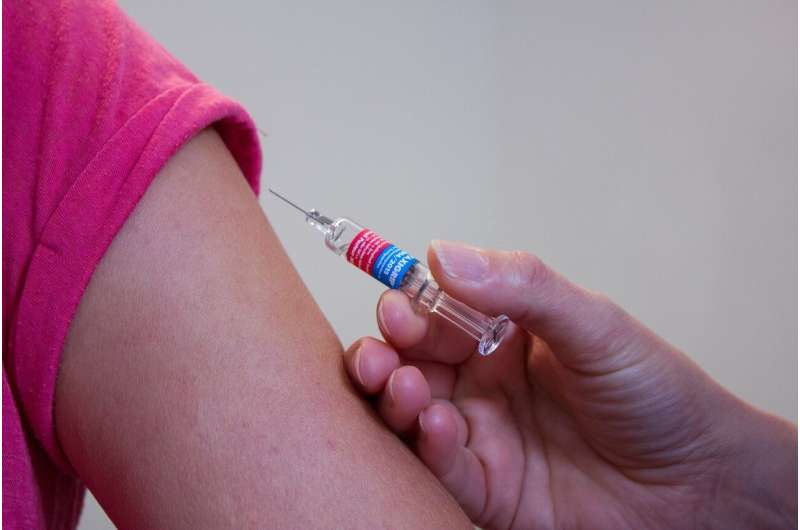Barring nonmedical exemptions increases vaccination rates, study finds

The first rigorously controlled study of a 2016 California law that aimed to increase childhood vaccination rates by eliminating nonmedical exemptions has found the law worked as intended, although the researchers noted a small increase in the number of medical exemptions.
The study provides definitive evidence on the success of the California law, as policymakers across the United States and around the world debate similarly strict vaccine requirements.
"Vaccine hesitancy and the recent decline in vaccination rates is an increasing threat to public health and our patients," said Nathan C. Lo, MD, Ph.D., a medical resident at UC San Francisco and senior author of the study, published Monday, Dec. 23, 2019, in PLOS Medicine. "Our study shows that government policy has a role to address this, and that eliminating nonmedical exemptions is an effective way of increasing vaccination coverage."
The researchers estimated how many California children would have received a key vaccine—measles, mumps and rubella, or MMR—if the law had not gone into effect, and compared that to how many children actually were vaccinated following the law's enactment. The comparison group was created synthetically with data from 44 other states, so that it resembled California's demographics and trends.
The researchers did something similar at the county level, comparing overall vaccine coverage in California counties to vaccine coverage in similar counties from 16 other states. The state data covered the years 2011 to 2017 and the county data covered 2010 to 2017.
"The big strength of our study over previous analyses is that we designed a quasi-experimental study with control groups, to adjust for ongoing trends in vaccination," said Sindiso Nyathi, a Ph.D. candidate in the Department of Epidemiology and Population Health at Stanford University School of Medicine, who was one of the first authors on the new paper. "This makes our results more reliable."
Both analyses showed that vaccination rates went up following the law's enactment. MMR coverage across the state increased 3.3 percent, compared to the "synthetic" state control; nonmedical exemptions decreased by 2.4 percent; and medical exemptions increased 0.4 percent.
In the county-level analysis, overall vaccination coverage went up on average 4.3 percent, nonmedical exemptions went down 3.9 percent and medical exemptions went up 2.4 percent. The averages masked much larger changes in vaccination coverage in some counties, which ranged from a 6 percent decrease to a 26 percent increase, with the largest increases happening in counties that had the lowest vaccine coverage before the law took effect.
"We did see an increase in medical exemptions, but in absolute terms the numbers remain small—1 to 2 percent, driven largely by a few counties—and we can expect them to remain of similar magnitude in the near term," Lo said. "Overall vaccine coverage increased by 10 to 20 percent in the high-risk counties, far more than the increase in medical exemptions."
These changes were enough to bring the vaccination rate to 95 percent in almost all California counties, which is high enough coverage to create so-called herd immunity, which can prevent disease from spreading among vulnerable groups, like newborns and older children who cannot receive vaccinations for various medical reasons.
"The implication of our study is the law brought about protection through herd immunity," said Hannah Karpel, a student at New York University School of Medicine, and a first author of the paper. "Even small average increases can have a big effect."
More information: Nyathi S, Karpel HC, Sainani KL, Maldonado Y, Hotez PJ, Bendavid E, et al. (2019) The 2016 California policy to eliminate nonmedical vaccine exemptions and changes in vaccine coverage: An empirical policy analysis. PLoS Med 16(12): e1002994. doi.org/10.1371/journal.pmed.1002994




















